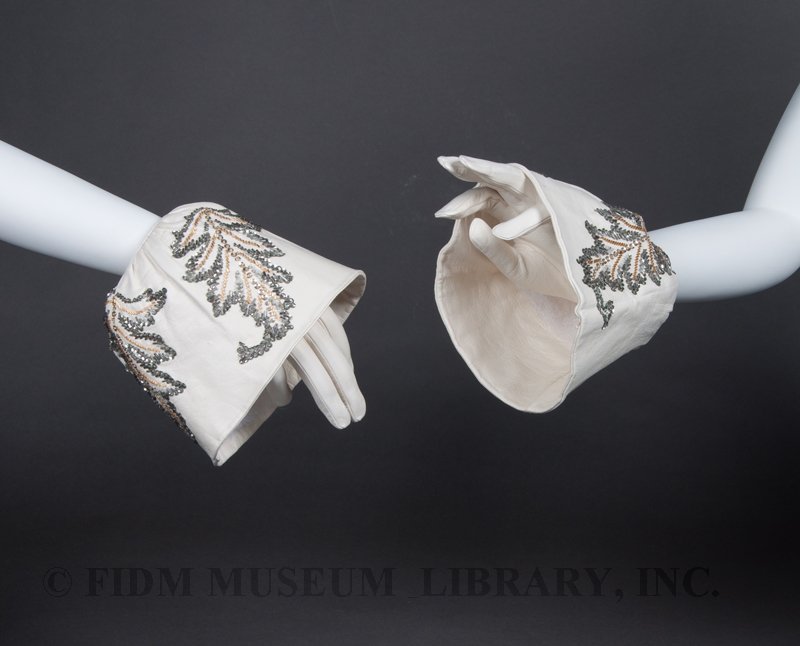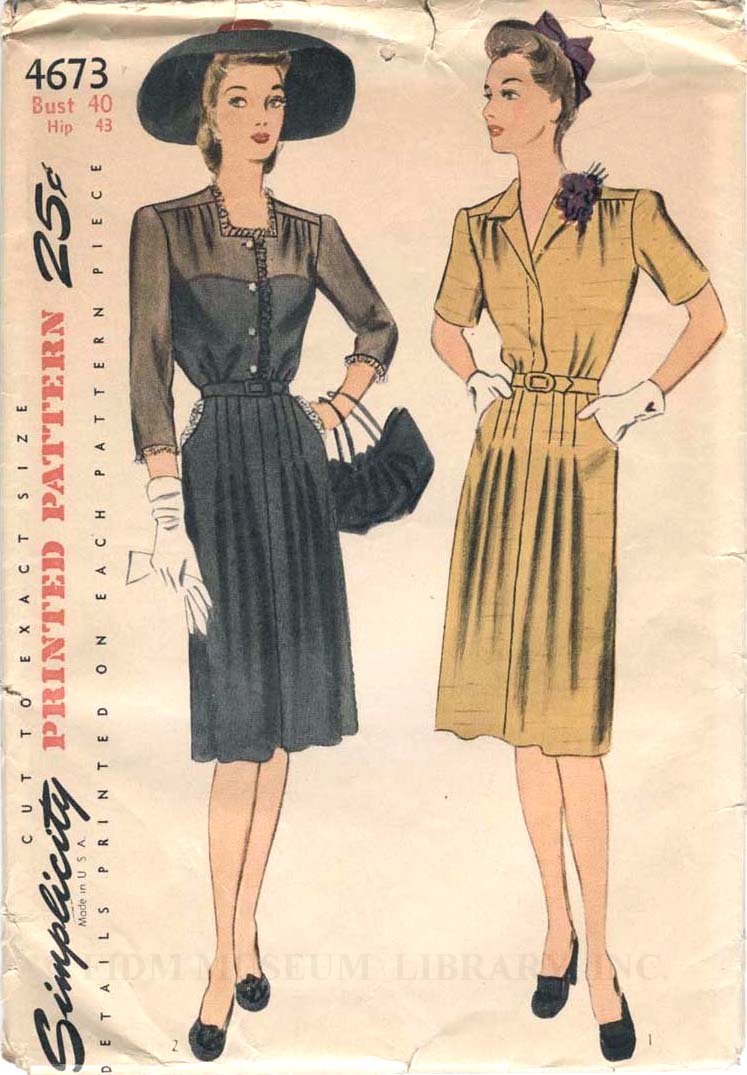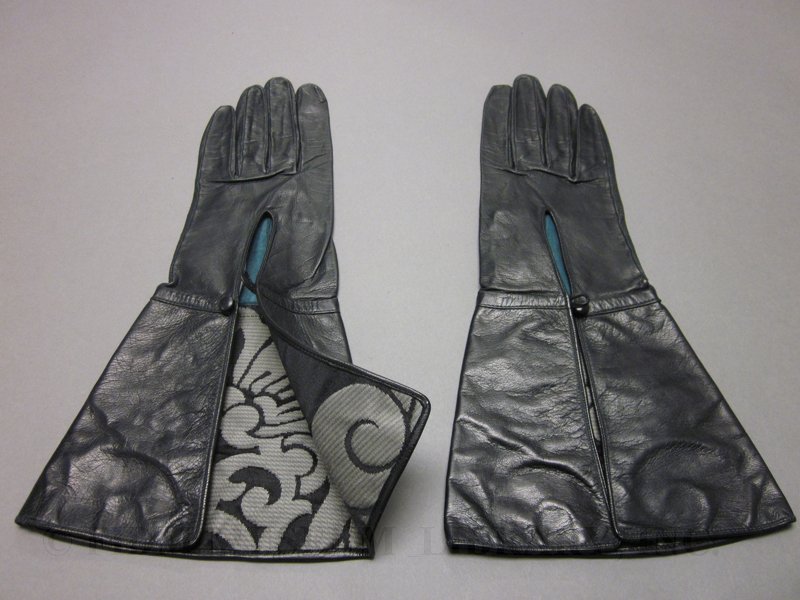In contemporary fashion, gloves are generally overlooked. Warm knitted gloves keep our hands warm in winter, while sturdy canvas or leather gloves protect our hands during gardening or construction projects. Protective gloves (or sometimes mittens) fill an important role, but because they are primarily utilitarian, function often trumps design. Though brightly colored winter gloves are often cheerfully appealing, they aren't worn just for their appearance; if they aren't warm enough, you'll probably purchase a different pair. When was the last time you wore a pair of gloves simply because their elegance was overwhelming?
 Evening gloves
Evening gloves
c. 1952
Christian Dior, designer
Lionel Legrand, maker
Leather, rhinestone, bugle beads & sequins
Museum Purchase
2006.5.4AB
This pair of elegant Christian Dior evening gloves date from the early 1950s, the last era in which gloves were an important component of a woman's wardrobe. From the late 1940s through the late 1950s, the haute couture was at the height of its creativity and influence. During this era, Christian Dior and other haute couture designers dressed their clients head-to-toe, with exquisite shoes, gloves, hats and handbags completing a haute couture wardrobe. When designing gloves, Dior frequently collaborated with Parisian glovemaker Lionel Legrand. The rhinestone, bugle bead and sequin leaves decorating the turned-back cuffs of these Dior gloves were completed by the embroidery house Rébé. With their full, embellished gauntlets, these leather gloves suggest the lavishly embroidered gauntlet gloves of the seventeenth century.
Though gloves were important for both men and women throughout most of the nineteenth century, cultural shifts in the twentieth century caused gloves to decline in importance. Between 1900-1930, women typically wore gloves when out-of-doors during the day, as in this 1912 painting of a young couple at a restaurant. Notice that she wears long, white gloves while his hands are bare; as the painting demonstrates, gloves had become a gendered accessory. During the 1930s, both day and evening gloves still warranted extensive fashion coverage. A 1932 article declared that "nothing finishes a costume so completely as gloves," a sentiment that would last through the decade.1 Long evening gloves complemented the lines of bias cut-evening dresses, while shorter gloves (usually white) were worn during the day. During World War II raw materials, particularly leather and silk, were dedicated to the war effort. Though gloves were still considered a fashionable accessory, women had to carefully maintain pre-war leather gloves or make do with practical cotton. This c. 1942-1945 Simplicity pattern features the military-inspired wartime silhouette paired with white (presumably cotton) gloves.
 Dress pattern
Dress pattern
1942-45
Simplicity
Gift of Andrea Tice in memory of Carmelita Johnson
2003.46.11
By the middle of the 1960s, gloves were worn only on very rare occasions. The advent of the youthquake had banished this and other signs of sartorial propriety in favor of individual expression in dress. In 1969, the New York Times noted the strong trend away from gloves: "gloves have been threatening to become as extinct as hats, at least with young women."2 Gloves were now viewed merely as hand-warmers, rather than the finishing touch to an elegant ensemble. This perception of gloves has persisted to the present day.
On occasion, a pair of contemporary gloves combines elegance and function. With a patterned silk lining and a classic black leather exterior, these Rochas gauntlet gloves fulfill both requirements.
 Gauntlet gloves
Gauntlet gloves
c. 1994
Rochas
Gift of the Muriel Pollia Foundation
2006.868.5AB
1 "Gloves Conform to Dress Mode." New York Times 21 Aug. 1932: X6.
2 Taylor, Angela "The Glove Makers Deserve a Hand." New York Times 3 July 1969: 26.

